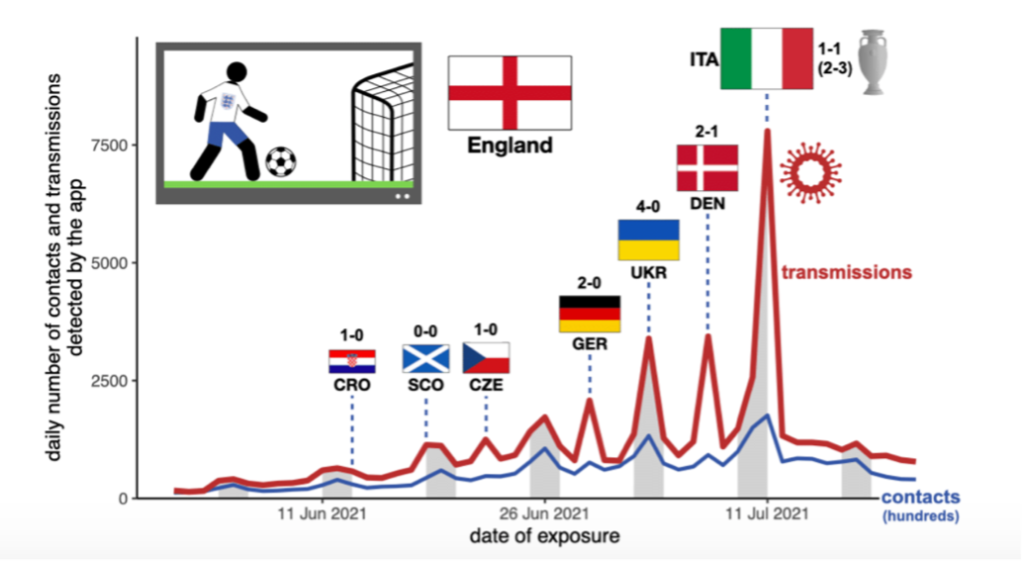This blog is based on an article published in the journal Science: “Drivers of epidemic dynamics in real time from daily contact tracing COVID-19 measurements”.
Dr Jasmina Panovska-Griffiths (Lecturer in Probability and Statistics)
In my recently co-authored study published in Science, we used digital contact-tracing data alongside mathematical modelling to provide insights into the COVID-19 epidemic dynamic in England and Wales. The study was led by researchers from the Pandemic Sciences Institute at the University of Oxford alongside researchers from Warwick University, and included contribution from data scientists from UKHSA. The core of the work comprised analysis of digital-contract tracing data from the NHS COVID-19 App for England and Wales which detects proximity between phone apps to alert people at risk of infection.
The contact-tracing data allows separation of contacts and transmission by day of contact and by settings and facilitate exploration of whether the contacts and transmission during the week and the weekend differed. Our results showed high variability in this; for example transmissions from very short exposures of less than 30 minutes were more frequent during the weekend than in the week, notably more than twice as common on Saturdays than on Mondays. Furthermore, exploring this pattern over different time periods, and specifically over periods of high social-mixing, also suggested an association between high social mixing and increased COVID-19 transmission.
For example, during the Euro football tournament in 2021, on the days that the English football team played matches there were sharp spikes in both numbers of exposures and the transmission probability (Figure below). Notably, on 11 July 2021 when England played Italy in the final, transmissions were between six and nine times higher than what would otherwise have been expected. Since the football matches in 2021 were played in football stadiums all across Europe and not in one specific place, the peaks in transmission on match days can be attributed mostly to social gatherings in homes and pubs, rather than to supporters at the stadium. This analysis is rather topical as, at the time of writing, there is a Euro 2024 football tournament and we should be grateful that there isn’t a highly-transmissible COVID-19 in circulation as we gather together with friends to watch the matches.
In addition to untangling the association between social mixing and transmission, in the paper we also used the contact-tracing data to evaluate the temporal distribution of the effective reproduction number R (the average number of secondary infections that emerge from one infection) over the study period. During the COVID-19 epidemic in the UK, R was generated weekly and fortnightly by the UKHSA Epi-Ensemble modelling group under my leadership and in collaboration with academic partners across different UK universities. In the paper, we compared the changes in R derived from the ensemble of mathematical models generated by us, versus the R from the contact-tracing data. The results illustrated that using digital contact tracing to estimate the reproduction number R can be an alternative approach which allows epidemic changes to be seen at least five days earlier than via our ensemble modelling. Hence digital contact tracing can be a useful alternative early-warning system of epidemic change.
Overall, this interesting study illustrates that digital contact tracing can not only help control epidemics by identifying and directly preventing transmission, but is also a useful innovative approach for epidemic nowcasting.




